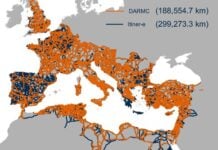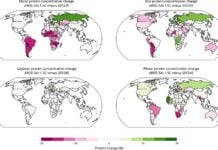In the remote, high-altitude grasslands of the Andes, tiny mountain ponds may be contributing significantly to global climate change – a finding that challenges existing assumptions and highlights a previously overlooked aspect of Earth’s carbon cycle.
The Hidden Carbon Highway
Scientists have long studied major water bodies like lakes and rivers, but smaller aquatic systems, particularly those in mountainous regions, have received less attention. New research, however, reveals that even the smallest, most isolated ponds can emit substantial amounts of greenhouse gases, playing a surprisingly outsized role in climate change.
The study, published in the journal Limnology and Oceanography, focused on the páramo ecosystem in Ecuador’s Andes. These high-altitude grasslands contain numerous small, ephemeral ponds that, despite their size, release significant quantities of carbon dioxide and methane into the atmosphere.
The Surprising Findings
Led by Dr. Kriddie Whitmore, a postdoctoral researcher at Umeå University in Sweden, the team discovered that pond size alone doesn’t determine its climate impact. In fact, smaller ponds can sometimes emit more carbon than their larger counterparts nearby.
“Our study shows that the smallest ponds can make a big difference,” explained Whitmore, who earned her Ph.D. from the University of North Carolina. “These results highlight the need for increased research focused on small aquatic systems.”
The researchers measured emissions across ponds at different elevations and temperatures. They found that factors like elevation, water temperature, and the connection between ponds and surrounding soil significantly influence carbon release. Contrary to past assumptions, size wasn’t the only factor determining a pond’s climate impact.
Filling a Critical Knowledge Gap
Dr. Diego Riveros-Iregui, the study’s principal investigator and professor of geography and environment at UNC, emphasizes that these high-altitude ecosystems have long been neglected in global climate models.
“These areas have long been blind spots in global climate models,” said Riveros-Iregui. “By uncovering what drives carbon emissions in these remote, high-elevation ecosystems, we are filling a major gap in global climate science.”
The páramo stores vast amounts of carbon in its soils, making it a critical component of Earth’s climate system. However, without understanding how carbon is released from these ecosystems, climate models could not accurately represent tropical mountain landscapes.
The Path Forward
The implications of this research extend beyond the Andes. Similar small aquatic systems exist in mountain ranges worldwide, including those in South America, Africa, and Asia.
“Incorporating emissions from these small ponds into global models will help scientists make more accurate carbon budgets,” explained Riveros-Iregui. “This knowledge helps us refine climate models and better understand how tropical mountain landscapes influence Earth’s carbon balance.”
By accounting for these hidden carbon sources, scientists can improve predictions about how climate change might affect carbon cycling in vulnerable mountain regions.
Why This Matters
This research demonstrates that climate change cannot be understood by studying only the largest, most visible ecosystems. The smallest, most remote water bodies may hold crucial keys to understanding Earth’s carbon balance. As climate models become more sophisticated, incorporating these previously overlooked factors will be essential for accurate predictions and effective climate policy.
The study underscores that in the complex web of Earth’s climate system, sometimes the smallest players have the biggest impact





























